Summer in the tall country of west-central Idaho is hot. Folks in the little river town of Riggins regularly watch the mercury climb into triple-digit territory, and more often than not, August skies are clear, but tinged with acrid smoke from surrounding wildfires. Some days, the sun looks like a distant orb — it’s easy to make out its edges thanks to all the haze its light must work through in order to reach the earth.
The sunrise over the Salmon River was stunning thanks to that smoky filter, and we set out early that August morning, hoping to get to the trailhead that would lead us into the backcountry of the Gospel-Hump Wilderness before the heat set in. We’d cross a footbridge over the main Salmon at just about the place where boaters come out of the Frank Church-River of No Return Wilderness on the Lower 48’s most ambitious float trip down the Middle Fork. They might have started a week before at Boundary Creek on the shoulders of the Sawtooths, and by the time they come out of the canyon, they can already taste the cold beer at the Seven Devils Bar downstream in Riggins.
But by the time we navigated some road construction, stopped to pee and checked the tires after running over the mother of all potholes, the parking area at the trailhead was scorching — it wasn’t even 10 a.m., and it was tickling 90 outside. And to think, Idaho’s famous B-run steelhead were well on their way, moving up the Columbia and sacrificing many of their own as they traversed eight dams between the ocean and their Gem State spawning waters. They likely wouldn’t move through this section of the river until later in the month. I remember thinking that the weather would have to break if the chromers were to make it up the river. It was just too damned hot.
The kids and I stopped at the middle of the footbridge over the river and waved at a collection of boats that were making their way out of the wilderness. The floaters looked tired and spent, and, with the weather warming, a handful of them had slipped into the lukewarm waters of the Salmon, content to spend the last day on the river floating beside the rafts that toted them over Class III and IV rapids just days before.
We crossed the river and pointed our noses up the trail, which, from a high bluff, overlooks the green waters of Idaho’s longest, undammed river. Cameron, a little kid at the time, ran ahead, predictably looking for trouble. I’d been warned by a friend who lives outside of Riggins — it was rattlesnake season, and the big western diamondbacks often stretched across the trail in search of sun and warm.
“Slow down, Chief,” I said. “Watch for snakes.”
He hit the brakes as only an 8-year-old can do, and skidded across the pebbly trail in a cloud of summer dust. And, not five minutes later, the three of us stood quietly, stopped on the trail as we let one of the big reptiles slither off into the arid landscape unmolested.
The Gospel-Hump is a unique place. It essentially straddles a stretch of rugged real estate that stretches between the South Fork of the Clearwater River to the north and the main Salmon to the south. It’s southern slopes are dry and arid and hot. The north slopes are timbered with giant cedars — some of the biggest left anywhere in the Lower 48 — and it has a real Pacific Northwest feel to it. Down both slopes run dozens of small streams fed by snowmelt, rain water and high-mountain lakes that rest below the summit of Buffalo Hump that peaks out just short of 9,000 feet. And the vast majority of those little streams are trout streams, even as they flow into the Salmon which sits at less than 2,000 feet above sea level where we crossed the footbridge.
These waters aren’t home to big trout, mind you. But they are Idaho natives — feisty redbands that share the genes with the giant steelhead that swim hundreds of miles to the Pacific and back. These fish, through some game of genetic roulette, never made the downstream journey, choosing instead to stay home and become the little rainbows of the wild. In some streams, the dominant salmonid is the west slope cutthroat trout.
But there are some big fish in these small streams that trickle into the Salmon. They’re not trout, and they’re not super plentiful. They’re char, and they’re just as native as Idaho’s west slope cutthroat trout and its diminutive redbands. And, come late summer, they’re on the prowl, staging to spawn and filling their bellies, likely with their smaller salmonid cousins.
The West’s native char
The bull trout (Salvelinus confluentus) is the West’s answer to brook trout — it’s a native char that depends on cold, clean water and intact, connected habitat. Being able to move about a river system over the course of a year — from the depths of an icy winter to the skinny-water months of high summer — is vital for bull trout. When the final four dams went up on the lower Snake River half a century ago or more, the Northwest’s salmon and steelhead weren’t the only casualties. Bull trout traditionally moved from the Columbia to the high-country streams of Oregon and Idaho. Some of the bull trout's ancestors may have been anadromous, like the closely related dolly varden (Salvelinus malma), swimming from the Pacific into Columbia River tributaries throughout the region. The dams have undoubtedly fragmented bull trout habitat in the inland Northwest. Dam construction, combined with other environmental challenges ranging from the introduction of non-native invasive species (the Salmon River near Riggins, for instance, is home to a contrived and thriving smallmouth bass fishery) to climate change that has narrowed this native’s window for reproductive success, has certainly impacted bull trout numbers.
But the plight of the bull trout hasn’t gone unnoticed. In 1999, it was listed as threatened under the Endangered Species Act and some 9,000 miles of rivers and streams in Idaho alone were designated as “critical habitat” for these far-swimming natives. The designation may well have kept the species somewhat intact by protecting the last available habitat for these fish, and protecting the fish themselves from harvest. It’s legal to fish for bull trout in Idaho, but they must be released unharmed to go about their business.
And their business takes Salmon and Clearwater river bull trout all over the region. Just last week, the Idaho Department of Fish and Game issued a press release documenting the journey of a single bull trout that was first captured and tagged in January 2018 as a 12-inch fish by Idaho Power biologists working in Hell’s Canyon, where the Snake River forms the boundary between Idaho and Oregon. A year later the same fish was captured again in Hell’s Canyon, this time measuring 16.5 inches. Just five months later, in June 2019, the same bull trout was documented in Oregon’s Imnaha River, which runs into the Snake at Hell’s Canyon. In July 2019, that same bull trout was detected (using the transmitting tag it received upon being captured the first time) almost 200 miles away in a small stream in central Idaho.
Then, just this past winter, the wandering bull trout was again captured in Hell’s Canyon, and just over a month ago, it turned up again in the Imnaha. The smart bet now would be to assume that the fish is on its way up the Salmon or Clearwater, where it will stage and eventually spawn in some unnamed tributary.
That’s a lot of swimming for an inland fish, and it also demonstrates the need for connectivity and healthy habitat in the Lower Snake River system, which includes both the Salmon and Clearwater rivers and their tributaries.
About those tributaries
And, I would find out that hot August day in the Gospel-Hump Wilderness, just how those tributaries work for bull trout.
The kids and I kept on the trail for a bit until we hit the first creek crossing. This particular stream flows clear and cold through a boulder field, and as it gets closer to the Salmon, it spreads out a bit, almost into an alluvial fan, with trickles running each direction, only to have them all marry up and form deep plunge pools as they come together. We strung together a couple of light-weight fly rods, tied on some size 12 Dave’s Hoppers and hopped from rock to rock, catching 10-inch redbands on just about every cast.
It was great fishing for the kids, who, so long as the fly hit water, couldn’t help but catch a trout. I’d been the one to drag them out of bed early, force a motel breakfast featuring powdered eggs and paper-thin bacon down their throats, and I’d earned their ire for taking them out of cell range and putting them within striking distance of a rattlesnake (my daughter retells this story with excessive drama, and the tale usually includes the phrase, “ … and we almost died that day in the middle of nowhere ... ”). So when the fishing turned into in-earnest catching, I went from goat to hero.
And, by mid-afternoon, we’d boulder-hopped our way to where the cold water of the creek met the river, fresh out of the canyon that shrouds and cools it for well over 100 miles from the granite crags of the high country to the cheat-grass cliffs where we fished that afternoon.
And, not that I was the least bit tired of catching willing redbands on a 2-weight glass rod, I saw the big river as a chance to hook into something a bit more substantive. And at the time, I was thinking that, with the longer 3-weight graphite rod I had attached to my pack, I might be able to fool a smallie or two while the kids kept the trout entertained.
And there, where the cold waters of the wilderness stream wedded with the ancient flow of the River of No Return, I managed to tie into a four-pound bull trout that chased an olive Woolly Bugger on the swing. No doubt enjoying the cold-water inflow from the little creek, the big char had parked itself in the pool below the confluence and likely made a living eating 6- to 10-inch redbands that had the stones to venture into the main river.
The big fish dived deep, and before I knew it, it had all of my fly line and a good 20 yards of backing stretched into the current of the Salmon, and it was its way to Hell’s Canyon. It took a lot longer than it should have — and I’ve since reconciled to the idea that swinging streamers in such big water shouldn’t be done with a 3-weight — but I did manage to bring the char to hand, and show it to the kids and set it free into the emerald current.
The last of the natives
As of this writing, just a little over 26,000 chinook salmon have crested Lower Granite Dam, the highest dam on the lower Snake River in eastern Washington and the last dam to be completed in 1975. That’s less than half the five-year average. The steelhead run looks equally dismal, but we won’t know for sure until we start to see fish moving up the Columbia en route to the Snake, and, eventually, Idaho in the coming weeks.
What we do have, though, given the stellar health of Idaho’s spawning and rearing habitat for both trout and salmon, is potential. Should anglers and others who value connected river systems and intact habitat ever mass the clout needed to influence politicians and make the economic case for restoring the Snake River basin to glory, we could have substantial numbers of salmon and steelhead once again.
If we don’t, it’s a near certainty that most of you reading this will witness the extinction of Idaho’s ocean-going fish.
But the bull trout will hang on, if we can at least keep the inland habitat secure. If we can, at the very least, beat back the interests that would see the Salmon River country and the Clearwater River country logged, mined, roaded and tarnished, we may always have bull trout.
And if we have bull trout, we have a reminder of what once was. And, sadly, of what we couldn’t hold on to.





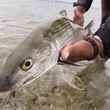




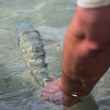
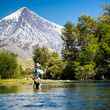


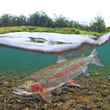
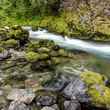













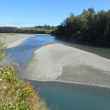
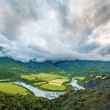
Comments
Roger Lahti replied on Permalink
The Lower Snake dams certainly slow the river. But they effectively pass salmon and steelhead up and down the river through their area. What is forgotten is that when the upper river dams went on line, Hells Canyon, Brownlee, Oxbow, etc. the salmon runs up the Snake dropped 60% within 5 years of their completion. The reason? They do not have any fish passage facilities. Their completion contributed to the 40% of historic runs that now make their way up the Columbia system into the Snake. They effectively removed untold miles of primE spawning grounds from the system. Just as a race of 100 lb. salmon no longer make their way up the Columbia into Canada, because Grand Coulee and Chief Joseph dams at the top of the chain have no fish passage. As we write, sockeye are being caught in numbers just down stream from these two dams, having navigated successfully some 9 or so dams. So what is the real problem? Cormorants, protected sea lions, Caspian Terns eating smolts and adults in the lower river before they get to the first dam? Changing Ocean conditions? Invasive predatory fish in the Rivers now? Dams with no fish passage facilities!
Right now the Columbia dams are handling record run off to keep devastating flooding from inundating lower river cities like Portland OR. The Lower Snake dams are providing power to cool the regions homes when the winds don’t blow, which is often in summer. There are no alternative sources for that power or the river transportation they provide.
doug balfour replied on Permalink
Great story, as usual. Good job, Chris.
Pages